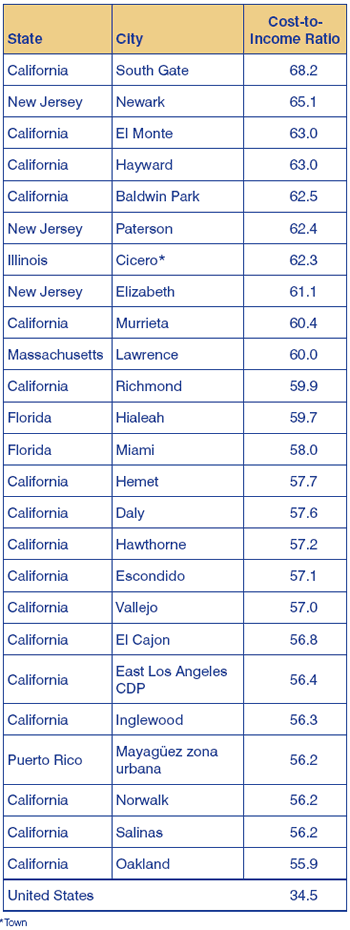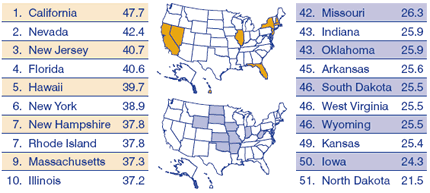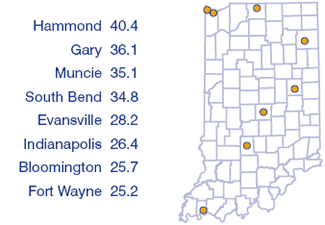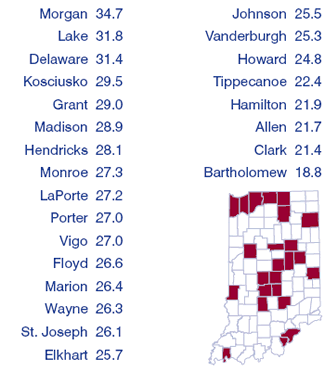Coasts Cost Most: Monthly Homeowner Costs
No homeowner would deny that monthly costs for mortgage, insurance, taxes and utilities take a big chunk of monthly income. Folks living in South Gate, California (southeastern Los Angeles County) might heartily attest to that, with 68 percent of income going to monthly owner costs. Put another way, 68 cents of every dollar of income reported in the survey went, on average, to monthly owner costs. (1)
Not surprisingly, 17 of the 25 highest burden cities are located in California, all of which have a 55 percent or higher ratio of monthly homeowner costs to income (see Table 1). Briefly, these monthly costs include mortgages, real estate taxes, insurance, utilities and any association fees. (2) Table 2 shows the top 10 states with the highest and lowest cost-to-income ratios.
Table 1: Cities with the highest Homeowner Cost-to-Income Burden

Table 2: States with the Highest and Lowest Burdens (Cost-to-Income Ratio)

While the average costs-to-income ratio, as calculated by the American Community Survey, was 34.5 percent nationally, 312 cites and towns included in the survey had ratio's higher than the national average. Data are available for eight Indiana cities, shown in Table 3. At 40.4 percent, the city of Hammond has the highest costs-to-income ratio, while Fort Wayne has the lowest (25.2 percent).
Table 3: Indiana Cities in the Survey

Of the 24 Indiana counties included in the survey, Morgan County, just southwest of Indianapolis, had the highest ratio at 34.7 percent. On the other end of the spectrum, Bartholomew County (southeast of Indianapolis) had the lowest ratio at 18.8 percent (see Table 4).
Table 4: Indiana Counties in the Survey

Notes
- These newly released figures come from the American Community Survey, currently covering geographic areas with populations of 65,000 or more across the United States.
- The data on selected monthly owner costs were obtained from questionnaire Item 14 and Items 20 through 24 in the 2005 American Community Survey. The data were obtained for owner-occupied units. Selected monthly owner costs are the sum of payments for mortgages, deeds of trust, contracts to purchase, or similar debts on the property (including payments for the first mortgage, second mortgages, home equity loans, and other junior mortgages); real estate taxes; fire, hazard, and flood insurance on the property; utilities (electricity, gas, and water and sewer); and fuels (oil, coal, kerosene, wood, etc.). It also includes, where appropriate, the monthly condominium fee for condominiums and mobile home costs (installment loan payments, personal property taxes, site rent, registration fees and license fees).
Carol Rogers, Executive Editor
Indiana Business Research Center, Kelley School of Business, Indiana University
